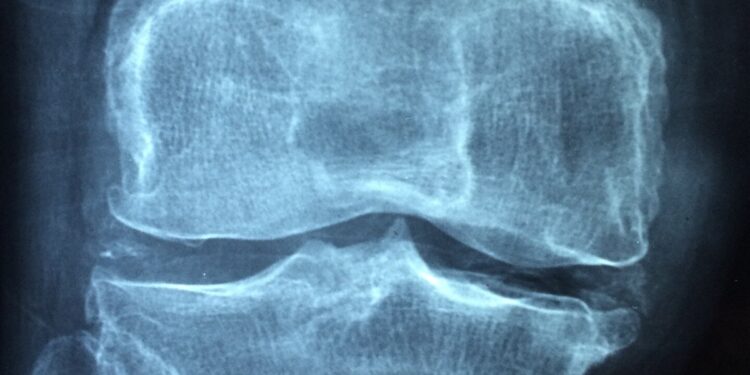Credit: CC0 Public domain
Scientists have identified a protein that blocks the activity of bone-forming cells (osteoblasts) by preventing them from maturing as they travel to bone-forming sites.
In their article published in Communication biology On October 11, 2024, a team of researchers led by Dr Amy Naylor and Professor Roy Bicknell and their team including Dr Georgiana Neag from the University of Birmingham discovered that the protein CLEC14A, present on blood vessel cells called endothelial cells in bones. , blocks the function of bone-developing cells called osteoblasts.
The job of endothelial cells during bone development is to transport immature osteoblasts to sites where new bone is needed. However, when the CLEC14A protein is also present outside the endothelial cell, osteoblasts cannot mature to the point of forming bone tissue.
In this study, osteoblast cells were collected from transgenic mice that had or had not been bred to produce CLEC14A. The osteoblasts were then used in vitro in an induction solution, and the team found that cells taken from mice without proteins reached maturation after four days, while those in the presence of CLEC14A matured eight days later.
Additionally, CLEC14A-free samples saw a significant increase in mineralized bone tissue by day 18 of the study.
Dr Amy Naylor, Associate Professor at the School of Infection, Inflammation and Immunology at the University of Birmingham, said: “Over the last decade, a specific type of blood vessel cell has been identified in bones. This blood vessel is called “type H”. » and is responsible for guiding bone-forming osteoblasts to locations where bone growth is needed.
“We have now discovered that a protein called CLEC14A can be found on the surface of H-type blood vessel cells.
“In the experiments we performed, when the CLEC14A protein is present, osteoblasts that shared the pathway with endothelial cells produce less bone. Conversely, when the protein is removed, they produce more bone.
“This additional understanding of how blood vessel cells control bone-forming osteoblasts under normal, healthy conditions paves the way for the development of treatments for patients with insufficient bone formation, for example in patients with fractures. which do not cure, osteoporosis or chronic inflammatory diseases.
Lucy Donaldson, director of research and health intelligence at Versus Arthritis, said: “We know that poor bone formation is a significant contributor to bone damage in osteoporosis and autoimmune inflammatory arthritis. lives in many ways, including their ability to work, the time they spend with family and friends, and their well-being.
“…We hope that these findings will eventually lead to new therapeutic approaches for people with musculoskeletal diseases. While these findings are promising, we will not rest until all people with arthritis have lack access to treatments and interventions that will allow them to live the life they choose.
More information:
The H-type endothelial cell protein Clec14a orchestrates osteoblast activity during trabecular bone formation and patterning, Communication biology (2024). DOI: 10.1038/s42003-024-06971-3
Provided by the University of Birmingham
Quote: Proteins blocking bone development may hold clues for future osteoporosis treatment (October 11, 2024) retrieved October 11, 2024 from
This document is subject to copyright. Except for fair use for private study or research purposes, no part may be reproduced without written permission. The content is provided for informational purposes only.



